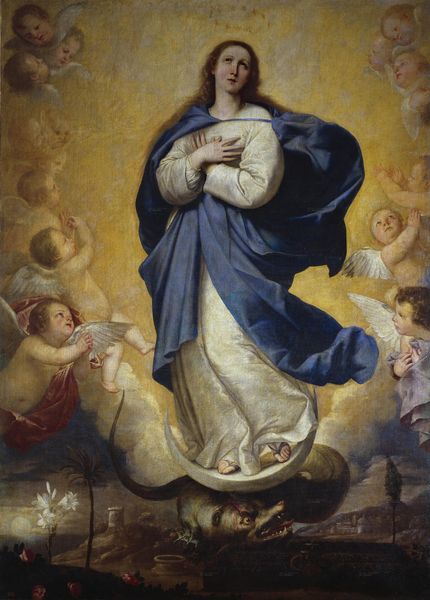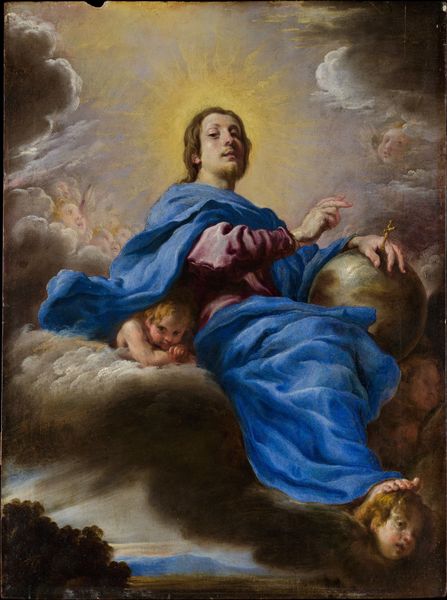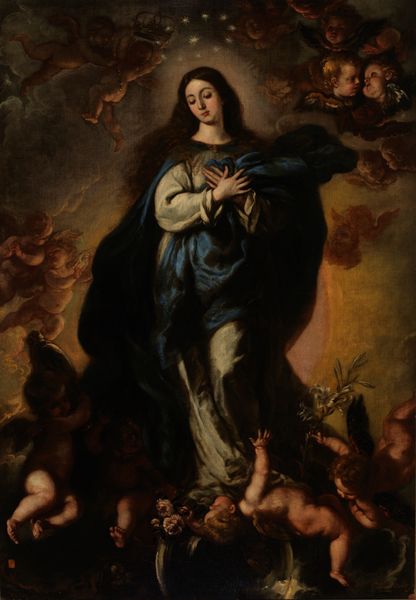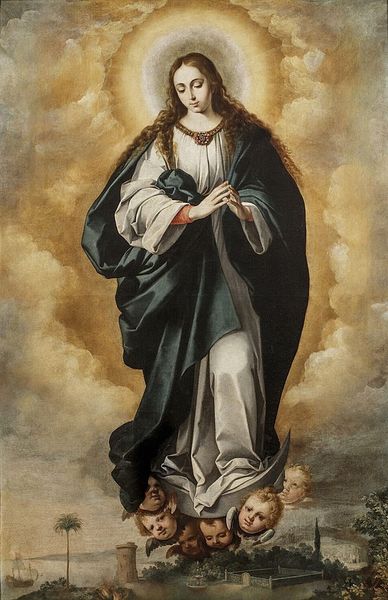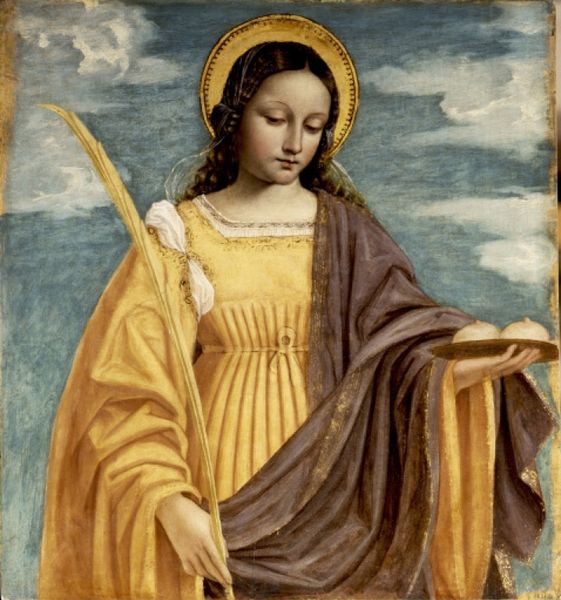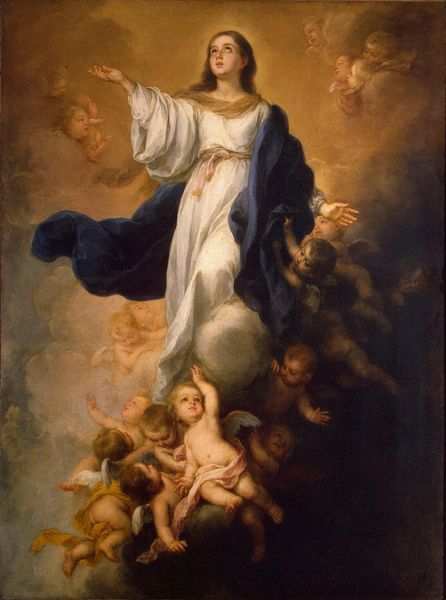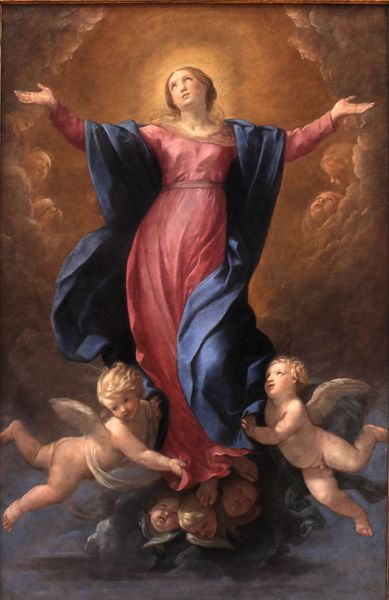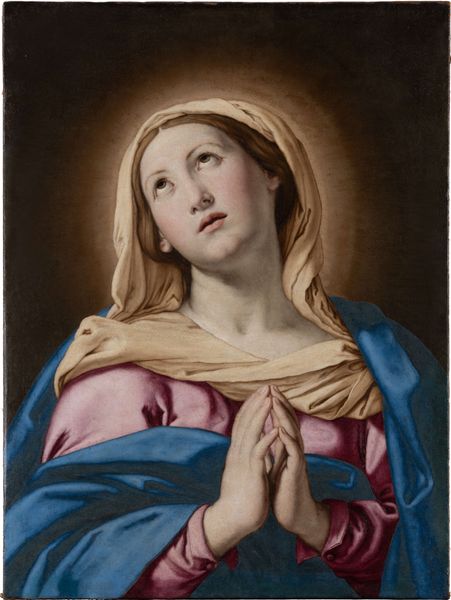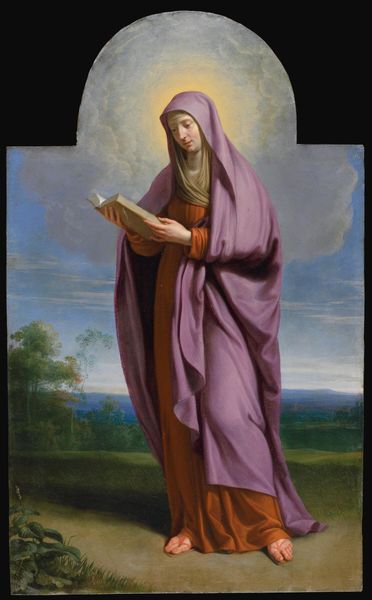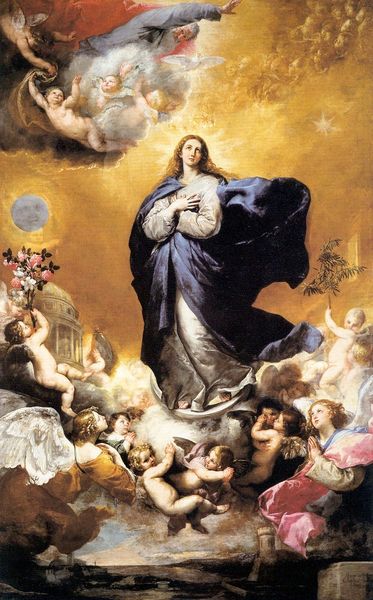
painting, oil-paint
#
portrait
#
allegories
#
allegory
#
baroque
#
painting
#
oil-paint
#
figuration
#
romanesque
#
mythology
#
history-painting
Dimensions: 101.6 x 135 cm
Copyright: Public domain
Editor: So, this is Diego Velázquez's *The Immaculate Conception*, painted in 1619. I’m struck by the figure's serene expression and the way she seems to float within the swirling clouds. How do you interpret this work within its historical context? Curator: The Immaculate Conception was a heavily debated doctrine in 17th-century Spain. Viewing it, we have to consider how religious institutions used art to solidify their beliefs. Velázquez's representation serves to visually promote and legitimize this particular dogma. What do you notice about the symbolism incorporated into the image? Editor: I see the stars around her head, maybe suggesting divinity, and the globe beneath her feet...earthly dominion, perhaps? Is this a straightforward illustration of religious doctrine, or something more complex? Curator: It's more layered than it initially appears. The inclusion of specific symbolic objects, such as the fountain, the temple, and the mirror, relates to the Litany of Loreto, standardizing her attributes. Velázquez positions the virgin as a key element in counter-reformation propaganda. But notice the virgin looks human, and Spanish! Velázquez subverts while adhering, depicting religious power but rooting it in something real. Editor: That’s fascinating! So, the painting is functioning on several levels simultaneously – reinforcing religious doctrine, participating in political discourse, and even subtly asserting cultural identity. Curator: Precisely! The political charge embedded in these iconic images speaks volumes about the society that commissioned and consumed them. Editor: I hadn't considered the socio-political factors that shaped religious art to such a great degree. Thank you. Curator: And thank you. Thinking about how ideology shapes aesthetics will keep you critically aware of the public role art plays, even today.
Comments
No comments
Be the first to comment and join the conversation on the ultimate creative platform.
